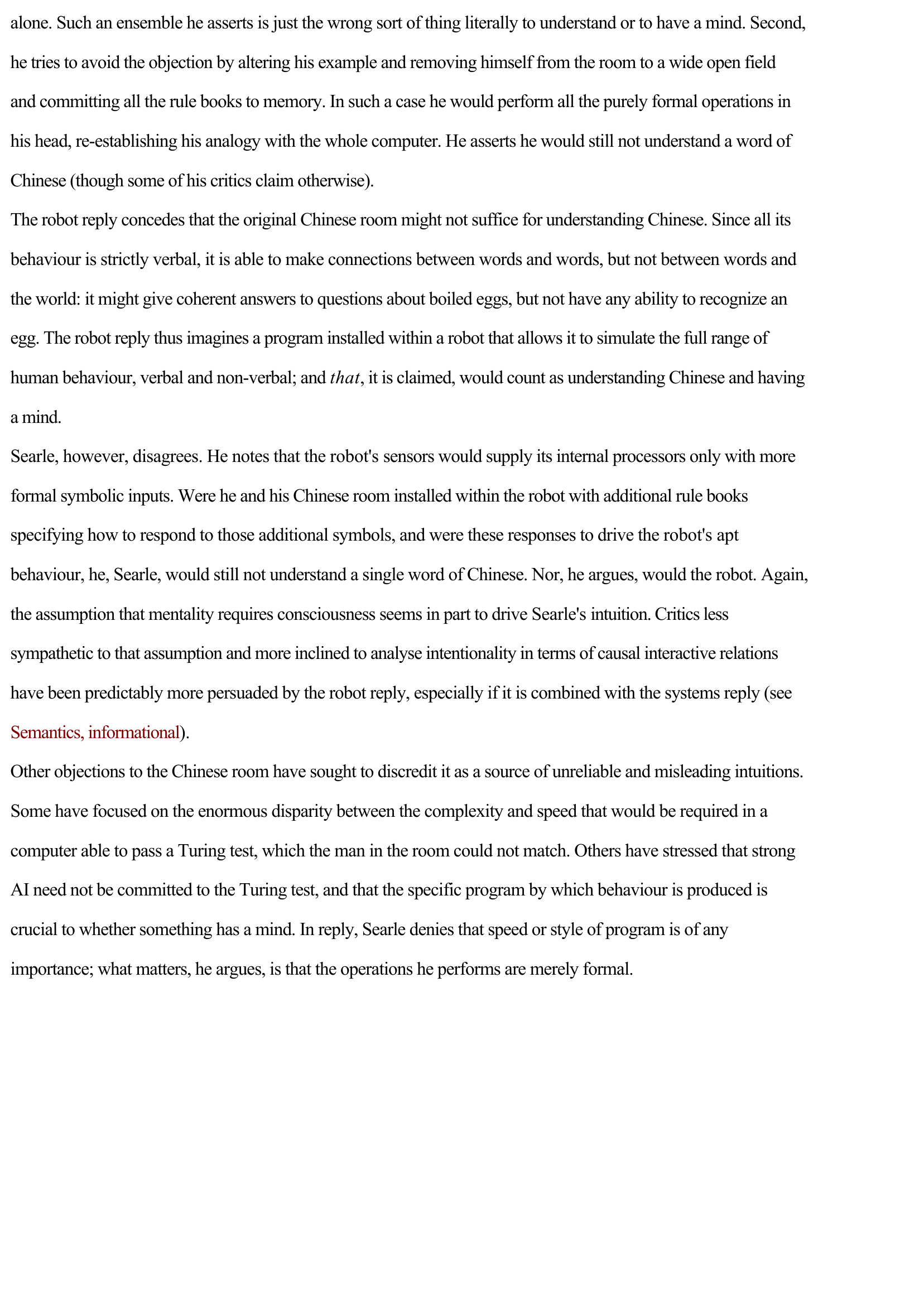Chinese room argument
Publié le 22/02/2012

Extrait du document
«
alone.
Such an ensemble he asserts is just the wrong sort of thing literally to understand or to have a mind.
Second,
he tries to avoid the objection by altering his example and removing himself from the room to a wide open field
and committing all the rule books to memory.
In such a case he would perform all the purely formal operations in
his head, re-establishing his analogy with the whole computer.
He asserts he would still not understand a word of
Chinese (though some of his critics claim otherwise).
The robot reply concedes that the original Chinese room might not suffice for understanding Chinese.
Since all its
behaviour is strictly verbal, it is able to make connections between words and words, but not between words and
the world: it might give coherent answers to questions about boiled eggs, but not have any ability to recognize an
egg.
The robot reply thus imagines a program installed within a robot that allows it to simulate the full range of
human behaviour, verbal and non-verbal; and that , it is claimed, would count as understanding Chinese and having
a mind.
Searle, however, disagrees.
He notes that the robot's sensors would supply its internal processors only with more
formal symbolic inputs.
Were he and his Chinese room installed within the robot with additional rule books
specifying how to respond to those additional symbols, and were these responses to drive the robot's apt
behaviour, he, Searle, would still not understand a single word of Chinese.
Nor, he argues, would the robot.
Again,
the assumption that mentality requires consciousness seems in part to drive Searle's intuition.
Critics less
sympathetic to that assumption and more inclined to analyse intentionality in terms of causal interactive relations
have been predictably more persuaded by the robot reply, especially if it is combined with the systems reply (see
Semantics, informational ).
Other objections to the Chinese room have sought to discredit it as a source of unreliable and misleading intuitions.
Some have focused on the enormous disparity between the complexity and speed that would be required in a
computer able to pass a Turing test, which the man in the room could not match.
Others have stressed that strong
AI need not be committed to the Turing test, and that the specific program by which behaviour is produced is
crucial to whether something has a mind.
In reply, Searle denies that speed or style of program is of any
importance; what matters, he argues, is that the operations he performs are merely formal..
»
↓↓↓ APERÇU DU DOCUMENT ↓↓↓
Liens utiles
- CHAMBRE -DE JACOB (La) [Jacob’s Room]. (résumé & analyse) de Virginia Woolf
- RENAISSANCE CHINOISE (La) [The Chinese Renaissance]. Hou-che (résumé)
- La version cartésienne de l'argument ontologique R. DESCARTES
- L'ARGUMENT ONTOLOGIQUE
- Celui qui connaît seulement son propre argument dans une affaire en connaît peu de chose.

































